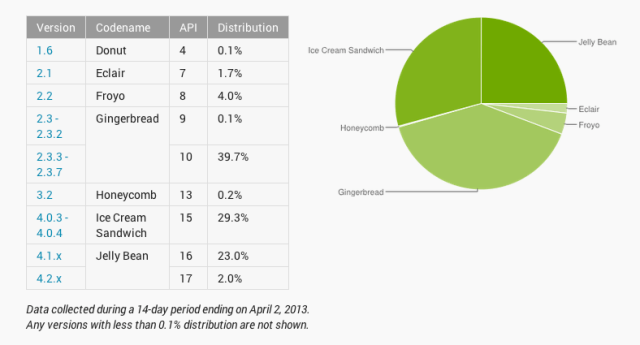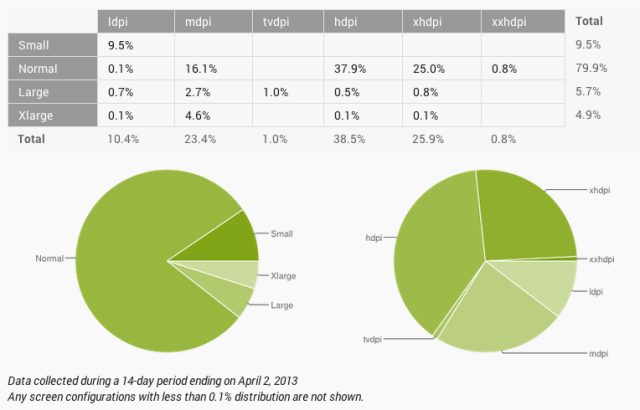Google has made a small but telling change to how it reports Android activation data for the benefit of its developer community, switching from reporting device activation based on a general or background check-in to its activation servers to — starting this month — counting only those devices where a user visits its Play Store. The shift is a subtle one but indicates that Google is trying to help developers identify active vs passive users of Android devices, to sort the wheat from the chaff as it were. (h/t to Android Beat for flagging the change.)
It’s also more proof, if proof were needed, that Google’s priority with Android has shifted from driving adoption of its platform (which has become the dominant smartphone platform, with a 70% global share at the end of 2012) to driving usage in ways that play nicely with its own ad-driven business priorities. In the early years of the platform Google used Android activations as a headline figure to market growth in Android adoption — so the more devices, the better. Now it is more concerned about de-emphasising those Android devices that don’t contain any Google services — and therefore don’t contribute to its coffers.
Mountain View noted the change to activations on its Android developer site, writing: “Beginning in April, 2013, these charts are now built using data collected from each device when the user visits the Google Play Store. Previously, the data was collected when the device simply checked-in to Google servers. We believe the new data more accurately reflects those users who are most engaged in the Android and Google Play ecosystem.”
Commenting on the change via Twitter, Enders Analysis analyst Benedict Evans noted: “Given the number of Android picture frames and smartphones-used-as-featurephones, devices hitting Play is a better metric than activations.”
The first swathe of activation data collected by Google — presumably using its new measure — shows the following breakdown of Android versions. It’s notable that Gingerbread (v 2.3.3 – 2.3.7) remains the version with the largest proportion of activations (39.7%), followed by Ice Cream Sandwich with 29.3% and Jelly Bean v 4.1.x with 23%:

We’ve reached out to Google to confirm this swathe of data, gathered during a two-week period ending April 2, was collected using the new Play measure — and will update this story with any response.
Google also reports screen size data for Android activations. Just 4.9% of activated devices over the two week period had an Xlarge screen size (of greater than 7 inches), while the vast majority (79.9%) were “normal” sized — from 3 inches to around 4.5 inches. The phablet and mini tablet containing category of ‘large’ took a 5.7% slice of the activations.
Update: Google has posted the following update to the Android developers Google+ page giving a little more info about the change — and underlining its desire to help developers identify the most ‘engaged’ Android users:
We’ve updated the way we calculate our device dashboards to make them even more useful, and have also updated the data on screen distribution. Note that as a result of these adjustments, some slices in the pie charts have changed more than usual.
The new device dashboards are based on the devices of users who visit the Google Play Store (rather than devices that have checked-in to Google servers). As a result, the dashboards more accurately reflect the users most engaged in the Android and Google Play ecosystem—and thus most likely to download and use your apps.

